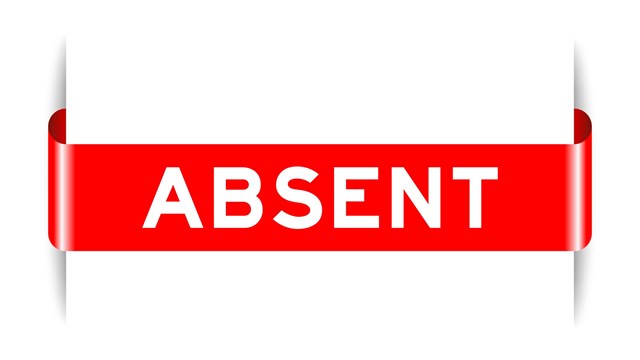
You may love your building. You may even love your neighbors and the members of your board. But there are few people who can say that they love their monthly board meetings or annual owner or shareholder meetings. That’s because these meetings can drag on for hours, making even the most ardent condo association booster feel like they're an exercise in time-wasting. Still others watch their board and shareholder meetings devolve into pointless shouting matches, complete with name-calling.
Board meetings —small and large, HOAs and condo associations — get out of hand. Issues are heated, lots of money is at stake and there are many of people with tons of different ideas of how their building should be run.
But it doesn’t have to be this way.
Boards, unit owners and committees can improve the quality and productivity of their meetings very easily with a few simple guidelines.
On Notice
Like so many other things, meetings are often doomed before they even start, thanks to poor planning (or no planning at all). One of the most common problems that bogs down a board or committee meeting is when a board member arrives and is not prepared for the meeting—or if the management didn’t give the board enough information to make informed decisions or enough time to review the information prior to the meeting. If at all possible, board members should be given all the information about the meeting and everything that has to do with the meeting at the earliest date and time possible. And it’s the board members' obligation to the building to take their position seriously, and to review all documents prior to the meeting.
The law says that owners need to have a 48-hour notice before a meeting, but most management companies give everyone a full week whenever possible. Managers suggest putting the agenda out as soon as they get the meeting notice so that the owners have the time to digest what will be discussed and will make sure to be there if the subject matter to be discussed is important to them. Board members also have to take the responsibility of reviewing the agenda seriously.
“Most larger buildings send out agendas for the board meeting in advance, not nearly as far as advance as they should, because it's usually a day or two before, but in smaller buildings you'll find that the board members are up on what's expected to be discussed, because they're on top of things all the time. They should be really sent three or four days before the meeting, not one or two,” says Bernd H. Allen, attorney and senior partner of Allen, Morris, Troisi & Simon, LLP in New York City. If board members are asking questions that should have asked in the days before, the meeting can drag on much longer than needed.
For board of directors meetings, the agenda is the closest thing to an association's sacred text. “The agenda is a perpetual, evolving document—whatever happens throughout the course of the month, the management and the board should be taking notes,”says Scott Bragg, a general manager with Florida-based AKAM On-Site, which also has a New York City management office. “About a week before the board meeting, I send out a blast to the board members, what topics should be covered on the agenda? What are owners talking about and management should keep their ears open, too, to what people are talking about. If you just sit down the day before, and say what are going to do at the board meeting, and it's last minute, the meeting's not going to be effective. But when that week before comes up and everyone has their lists. Then we can say let's go with A, B, C—take off E—it's a proactive document, not a reactive document,” he says.
Communicate, Communicate
A common source of conflict and complication involves the role unit owners, and how much time and freedom they are allowed to participate in board meetings. “You want the greater good for the building, and input and views of everybody,” says Bragg. “At the end we say, 'Is there any business?' Then a unit owner can bring up any type of new business that they think could benefit the community or affect them or others in the building. If somebody gets belligerent or negative, we ask them to refrain or put it in writing, and then we'll take a look at it, but don't drag down the meeting,” he says.
A simple way to quench a problem prior to them becoming issues would be to clearly explain the rules to the group before the meeting begins, and also to explain why each decision and choice is made throughout the meeting. Sometimes, however, by the time someone in the group remembers that this is an association board meeting, it’s too late, and it’s already gotten out of control and may have become combative.
Open forums on the agenda provide structure for community members to speak. Allow owners to participate in some portion of the meeting. Liz Comando, PCAM, CMCA, vice president of Red Bank, New Jersey-based Towne & Country Management, Inc., recommends that boards “limit owner comment period to two to five minutes minutes per owner. One of the best ways to keep owners involved is to form committees to research a major expense and make recommendations to the board. This allows owners to be involved in projects and can save the board countless hours of discussions at board meetings.”
Some boards avoid having unit owner or shareholder participation at all at board meetings for the interest of efficiency and candor.
“I think shareholders and unit owners should not be at board meetings. The board can't really address all the issues in the way that they want if there are people that are attending that cannot vote. Clearly, they shouldn't be allowed to say anything even if they attend. Shareholders and unit owners want to make the board as open as possible, but it restricts board members from doing their work properly,” says Allen
Certainly topics open for discussion should be on the agenda, rather than be random, and must be focused on the issues at hand. Moreover, it's not a chance for unit owners to start a griping session—boards shouldn't really allow owners to complain about other owners, board members, or higher assessments. Instead, contentious issues like that should be reserved for a different process. Managers say that the issues that work well are things an owner notices on the property that the board or management may have missed. These could include suggesting new rules that will correct some perceived issues that they have. Instead of personal agendas, it would focus on insight on the management of the property.
“If the board is perceived to be operating behind closed doors, residents tend to think the worst. It’s everyone’s community. The best way to avoid transparency complaints is to post a meeting notice in advance of the meeting, post an agenda so residents are aware of topics the board will be discussing, hold open meetings and publish minutes once they're board-approved,” says Comando.
All About Robert’s Rules
This type of meeting disorder isn’t something that only happens in association board meetings. In the 1800s, Henry Martyn Robert had been an engineering officer in the Army when he was asked to preside over a public meeting. It didn’t end well, and he was determined to figure out how to prevent anarchy from occurring during meetings.
He ended up writing Robert’s Rules of Order, which is a manual for parliamentary law that’s now in its 11th edition. There is a simpler version that can be used to run board meetings—and short of following a book’s procedures, there should be some form of structure. For the most part, Robert’s Rules are not really necessary for a board meeting, but aspects of the framework can be very helpful.
And while Robert’s Rules of Order may be too restrictive for associations, it would be helpful for boards and managements to read through the book to adopt a process related to and adopted from Robert’s Rules. Anything that prevents havoc, keeps order and sticks to the agenda at hand will do the job. Specific details such as calling a meeting to order, having a format for minute-taking, a process to obtain a vote on expenditures and for an agenda and other procedures—should have a detailed format from which the board and all the future boards will follow.
Such rules not only shorten the length of meetings, but create some consistency in the length of a meeting. “Keep board meetings under two hours, an hour and a half is ideal. If you can’t complete your association business within 2 hours, you are not running a successful meeting,” says Comando.
Even when meetings come to a close, the job of managers and board members are not done. Now that many associations have their own websites, most managers subsequently publish the prior month's meeting minutes there so unit owners who were not able to attend the meeting can catch up and stay informed. “When the minutes are approved from the prior month, I send a blast email to all our unit owners so the minutes are available to everyone via our website. That way they know what's going on,” says Bragg.
Follow the Rules
Think you can skip the rules if you have a small building? Think again. In fact, smaller building meetings can implode faster because the problems get to the surface sooner, so the better organized it is, the safer it is.
Smaller buildings are also similar to smaller schools or smaller offices where everyone knows each other—so gossiping and small talk is bound to slow meetings down. If there are rules, boundaries and laws in order to keep the meeting running efficiently, it would be better for everyone involved.
During the meeting, it’s very important that the secretary take good minutes that all project details can be followed from meeting to meeting. This saves time at subsequent meetings so that no time is wasted trying to remember what was decided the previous month.
Editorial Assistant Tom Lisi contributed to this article.






Leave a Comment